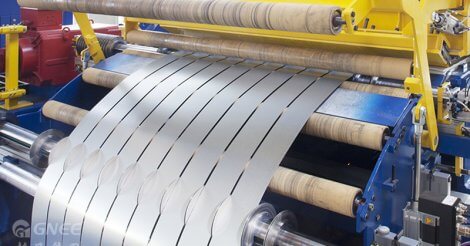- This topic has 0 replies, 1 voice, and was last updated 7 months ago by
duanhuiyun
.
-
18 September 2023 at 16:28copied to clipboard #70387duanhuiyunParticipantPosts: 3
Stainless steel, despite its singular name, comes in two primary flavors: the 300 Series and the 400 Series. Think of them as distinct characters in a stainless steel story. In this blog, we’ll unravel the differences using straightforward language, helping you choose the ideal stainless steel for your specific requirements.
300 Series Stainless Steel Coils: The Stainless Superstars
These stainless steel champions are the superheroes of the material world:
Composition: The 300 Series, scientifically known as austenitic stainless steel, primarily comprises chromium and nickel. They’re like the dynamic duo combating corrosion.
304 Stainless Steel: Consider this the friendly neighbor of stainless steel. It boasts 18% chromium and 8% nickel, delivering exceptional corrosion resistance. It’s the go-to choice for kitchen appliances and food-related equipment.
316 Stainless Steel: If 304 is Iron Man, then 316 is the entire Avengers squad. It contains 16-18% chromium, 10-14% nickel, and 2-3% molybdenum. This unique blend makes it virtually impervious to destruction. It finds its place in marine equipment, medical devices, and more.
400 Series Stainless Steel Coils: The Resilient Rebels
Now, let’s meet the rugged cousins, the 400 Series:
Composition: The 400 Series, also known as martensitic stainless steel, is robust and unyielding. They’re like the Batman of the stainless steel world.
430 Stainless Steel: Think of it as Batman’s trusted sidekick. With 16-18% chromium, it offers sufficient corrosion resistance for everyday items like cutlery and household appliances. A fun fact: it’s magnetic!
410 Stainless Steel: This one is your dependable bodyguard. It contains 11.5-13.5% chromium and provides decent corrosion resistance. You’ll find it in fasteners and valves.
Comparison:
Corrosion Resistance: The 300 Series acts like an impenetrable fortress against corrosion, whereas the 400 Series serves as a robust shield.
Strength and Hardness: The 300 Series is versatile and strong, while the 400 Series is tough and unyielding.
Magnetism: The 300 Series is usually non-magnetic unless you perform some wizardry on it. The 400 Series has an affinity for magnets, making it your choice if you require magnetic properties.
Choosing Your Champion: If you prioritize the utmost corrosion resistance and versatility, the 300 Series is your hero. However, if your project demands strength, hardness, and magnetism isn’t an issue, the 400 Series steps up to the plate.
Keep in mind that the selection depends on your project’s unique requirements. Understanding these distinctions empowers you to make an informed decision when selecting the perfect stainless steel coil for your mission.
- You must be logged in to reply to this topic.
You can use BBCodes to format your content
[br]
[hr]
[b]{content}[/b]
[i]{content}[/i]
[u]{content}[/u]
[s]{content}[/s]
[img]{image_url}[/img]
[url]{link}[/url]
[url url="{link}"]{text}[/url]
[heading]{content}[/heading]
[highlight]{content}[/highlight]
[center]{content}[/center]
[right]{content}[/right]
[left]{content}[/left]
[list]{content}[/list]
[sub]{content}[/sub]
[sup]{content}[/sup]
[pre]{content}[/pre]
[justify]{content}[/justify]
[color color="{color}"]{content}[/color]
[size size="{size}"]{content}[/size]
[ol]{content}[/ol]
[ul]{content}[/ul]
[li]{content}[/li]
You may use these HTML tags and attributes
<a href="" title="" rel="" target="">
<blockquote cite="">
<code>
<pre>
<em>
<strong>
<del datetime="" cite="">
<ins datetime="" cite="">
<ul>
<ol start="">
<li>
<img src="" border="" alt="" class="">
<div class="" title="">
<abbr>
<p>
<i>
<b>
<span class="" style="">


